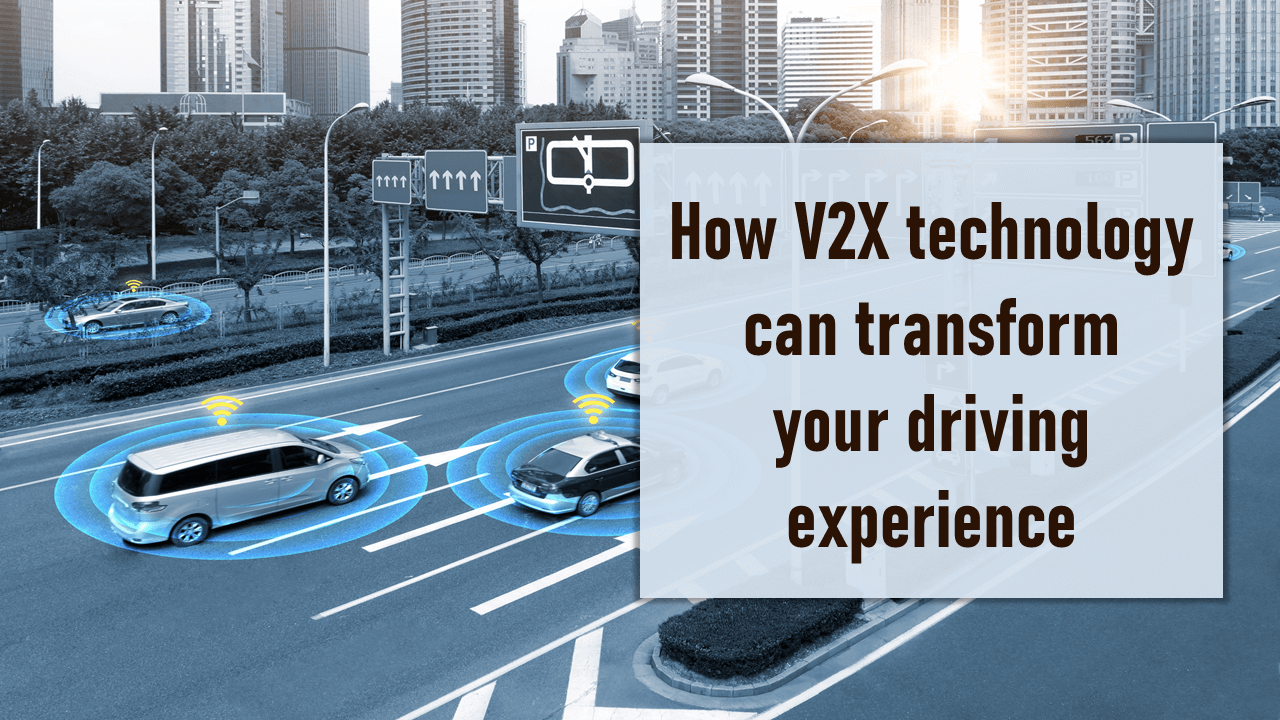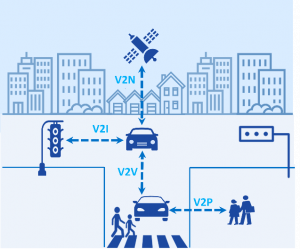How V2X technology can transform your driving experience
The automotive industry has gone through a series of transformation, ranging from telematics to connected mobility to autonomous driving. Traditional vehicles are now becoming smart vehicles through advanced hardware fit into the systems such as a V2X Connectivity Hub. As the industry moves across from lower levels of autonomy to higher levels, one technology is not sufficient and vehicle manufacturers are required to use a combination of technologies.
V2X is essentially an IoT application, where vehicles will seamless be able to communicate with each other (V2V), with external roadside infrastructure (V2I) and with pedestrians (V2P), which can actively encourage safe behaviour among drivers and other road users. V2X has the capability to integrate different modes of transport and the external infrastructure, enabling a seamless traveller experience.
V2X helps the vehicle in building a 360-degree situational awareness of the environment around. Traditional sensors and cameras have had limited field of view and restricted range, which is where V2X fits in as a dependable technology. V2X consistently senses all surrounding connected vehicles and can be used when other sensors fail or as a good redundancy. The significance of V2X technology.
Benefits of V2X Technology
- Improved Traffic Safety: A large percentage of people die due to accidents that occur out of to human carelessness. V2X is a great way to reduce the number of road accidents. It enables direct flow of information between vehicles, pedestrians, and infrastructure. With V2X, drivers will be alerted with nearby road hazards or any vulnerable pedestrians. V2X applications such as emergency break light can detect a sudden deceleration by a leading vehicle in a blind turn and alert the driver well in advance. Drivers can also be notified of pedestrian crossings in a blind turn to avoid any casualties.
- Improved Vehicle Efficiency: With V2X it is easier to communicate with road infrastructure and traffic signals which will optimize the road traffic and decrease the traffic jamming. Vehicles can easily detect most congested areas or traffic jams and change the route in real-time to reach their destination. Driving patterns, vehicle’s wear and tear will be better managed. This results in efficient and safer transportation system that, in turn, will help to save money and can be timesaving.
- Increased driving convenience: V2X decreases exhaust fumes and emissions because of less congestion on roads and smooth traffic flow. With platooning, vehicles can follow each other making better use of road space, saving fuel, and making the transport more efficient. Vehicles can easily detect most congested areas or traffic jams and change the route in real-time to reach their destination, no overcrowding in parking spots, and no delays on toll roads because of electronic pre-payment which maximizes fuel economy and reduce emissions.
- Reduced environmental impact: V2X technology has the potential to reduce the carbon footprint of vehicles. V2X can help eliminate long traffic jams and queues at traffic lights. Vehicles can travel much in a smooth manner in a free flow condition, reducing the environmental impact.
Key Use Cases of V2X Technology
V2V – Vehicle to Vehicle
|
|
V2I – Vehicle to Infrastructure
|
|
V2P – Vehicle to Pedestrian
|
|
V2X: The Driving Technologies
There are primarily 2 key communication technologies that power V2X: C-V2X and DSRC (Dedicated Short Range Communication) , Each varying on infrastructure. DSRC is built on a wireless communication system termed as “WAVE” while C-V2X is built on the traditional LTE modem. A DSRC radio will not be able to communicate with a C-V2X radio and vice-versa. The standard for DSRC is defined in the Wi-Fi 802.11p while that for C-V2X is defined in the 3GPP Rel. 14/15.
C-V2X has 2 different communication modes: Network and Direct
- Network Mode: Different vehicles, infrastructure talk to each other through the traditional broadband licensed spectrum. Enables long-range applications such as emergency vehicle passage. This approach is also termed as “Uu Interface”.
- Direct Mode: The vehicles, infrastructure and other assets talk to each other over the ITS band (5.9GHz), independent of the cellular network. This enables short-range applications with instantaneous communication with reduced latency. This approach is also termed as “PC5 Interface”.
However, there are a few similarities between both DSRC and C-V2X:
- Both technologies use the same message sets (SAE J2735 and J2945).
- Both technologies use digital signatures to ensure security and trust in message providers.
There has been varying interest across both technologies in different geographies. During the years 2015 – 2017, there had been widespread adoption of DSRC as it was the only V2X technology available.
- China – China has bet big on C-V2X, being the preferred technology with aggressive rollouts of Road Side Units and implementation of C-V2X infrastructure.
- US – DSRC lost the spectrum in the US, with a clear path toward C-V2X in the US.
- The Federal Communications Commission in November split the 75 megahertz of formerly-DSRC spectrum at 5.850-5.925 GHz, allocating the lower 45 megahertz of the band for unlicensed use and the upper 30 megahertz for intelligent transportation systems that must use C-V2X technology.
- Europe – With 2 of the biggest automotive companies integrating DSRC in their automobiles, there is quite a contention between the two technologies, the way forward.
- Japan – Similar to Europe, there have been mass production of vehicles with DSRC technology integrated, making it challenging for the switch to C-V2X.
V2X: The way forward
Benefits of V2X Technology requires the development of a complete technology ecosystem. Adoption by multiple players will create a network effect, providing benefits and advantages to all participants. Technology use cases would require investment in the roadside units, vehicle on-board units, network infrastructure and the complete analytics platform. The key ecosystem players are the telecommunication operators, Automotive OEMs, and their Tier-1 suppliers. Smart City system integrators and the governments.
Various automotive OEMs and industry players have now started integrating the V2X Stack in new automobiles.
- At CES 2020, Ford Motor Company announced that it will begin deploying C-V2X communications in all its new cars starting in 2022
- Volkswagen announced the premier of the all-new Golf with V2X Capabilities
With V2X technology now commercially viable, with the use case and value proposition being understood and defined, it is a technology with a trajectory to enhance automated driving and revolutionize connected mobility.
iWave Systems, a leading embedded systems and product engineering organisation, has developed a hybrid V2X Connectivity Hub which can power the next generation of connected mobility. The V2X Connectivity hub is powered by the latest iMX 8XLite applications processor, which is integrated with a V2X Accelerator and required security elements. Integrated with 4 CAN ports and an option to power over ethernet, The V2X hub can positioned as an On-Board Unit as well as a Roadside Unit.
To get in touch with iWave for enquiries and any further information, you can reach us at mktg@iwavesystems.com.
Learn more at:



